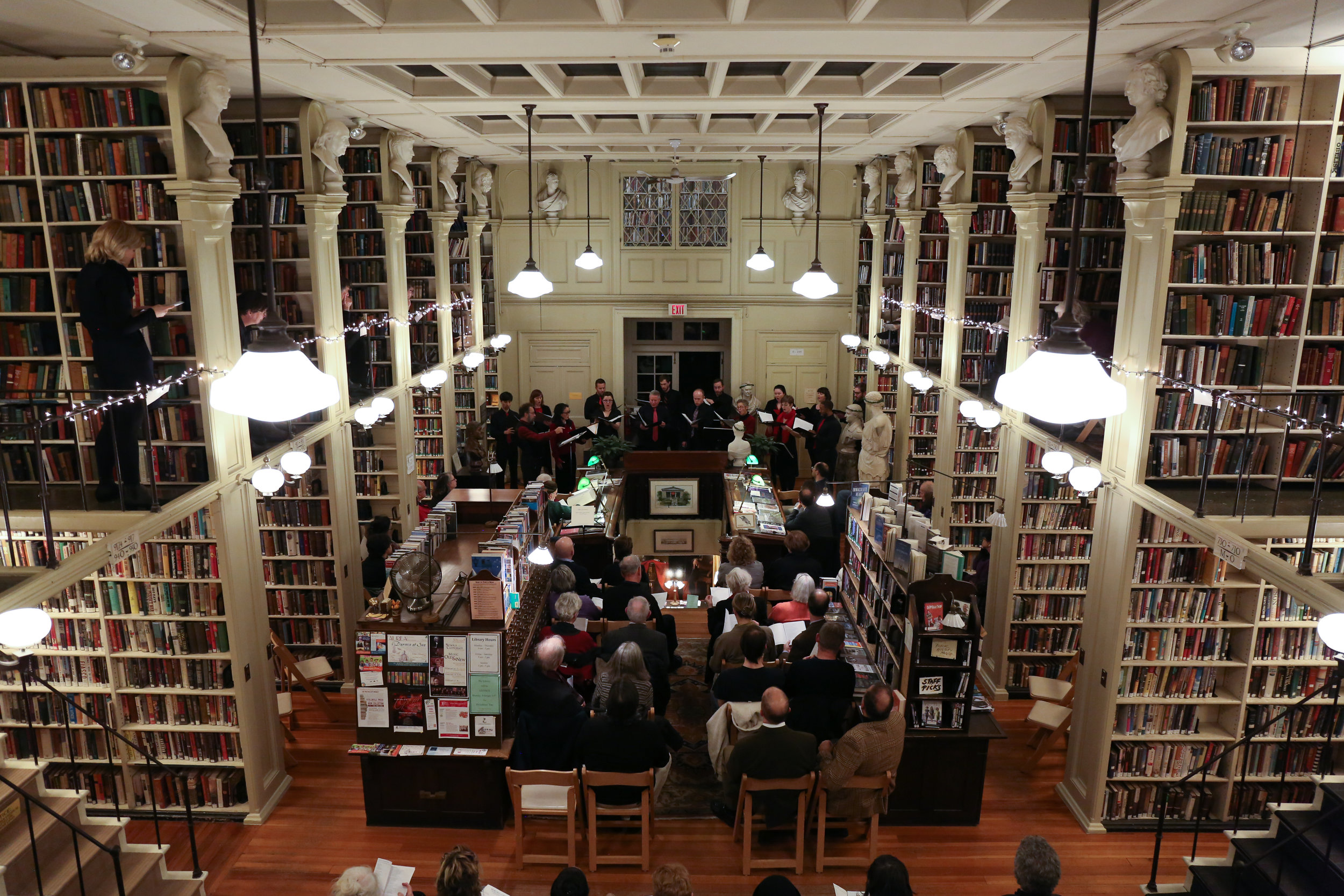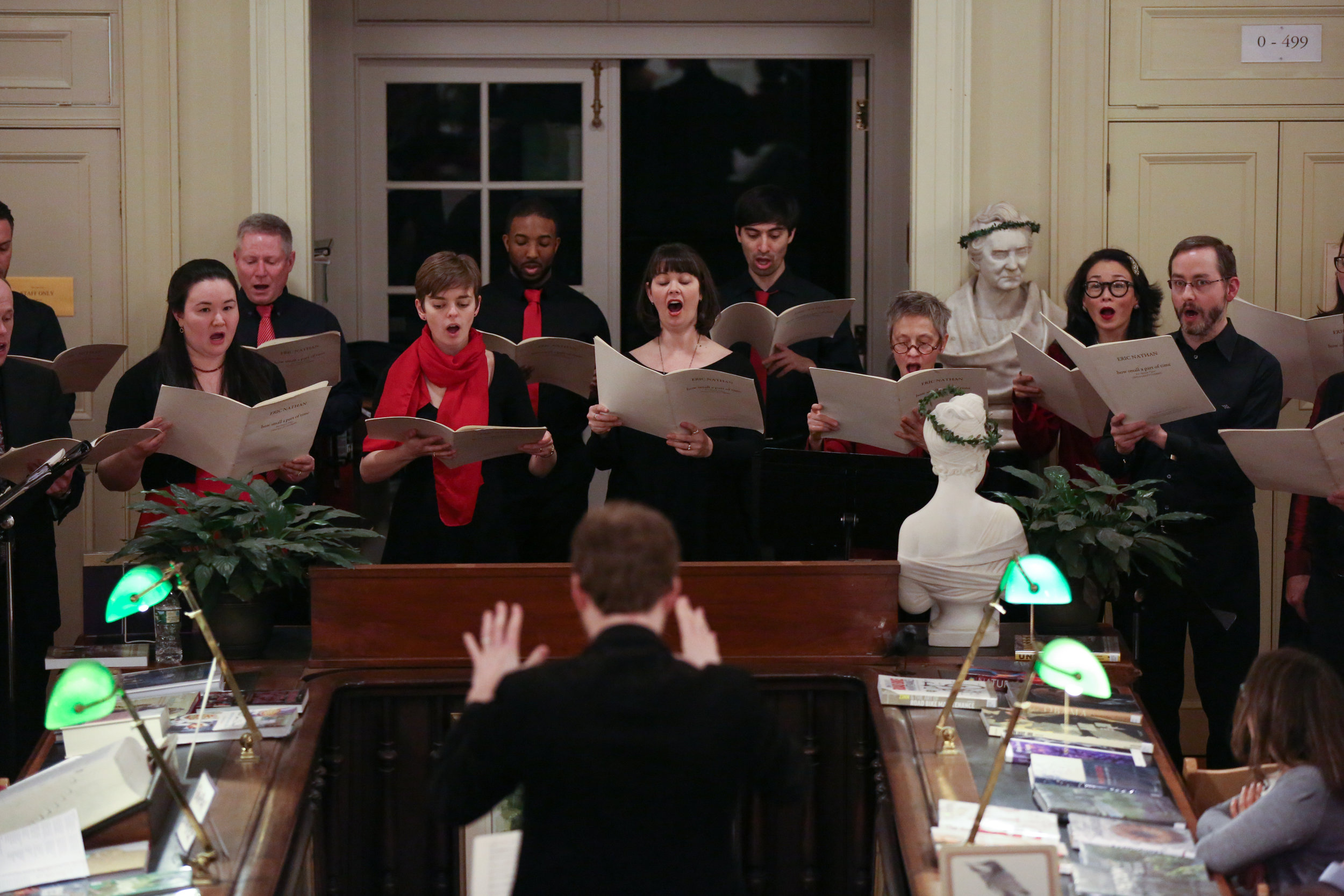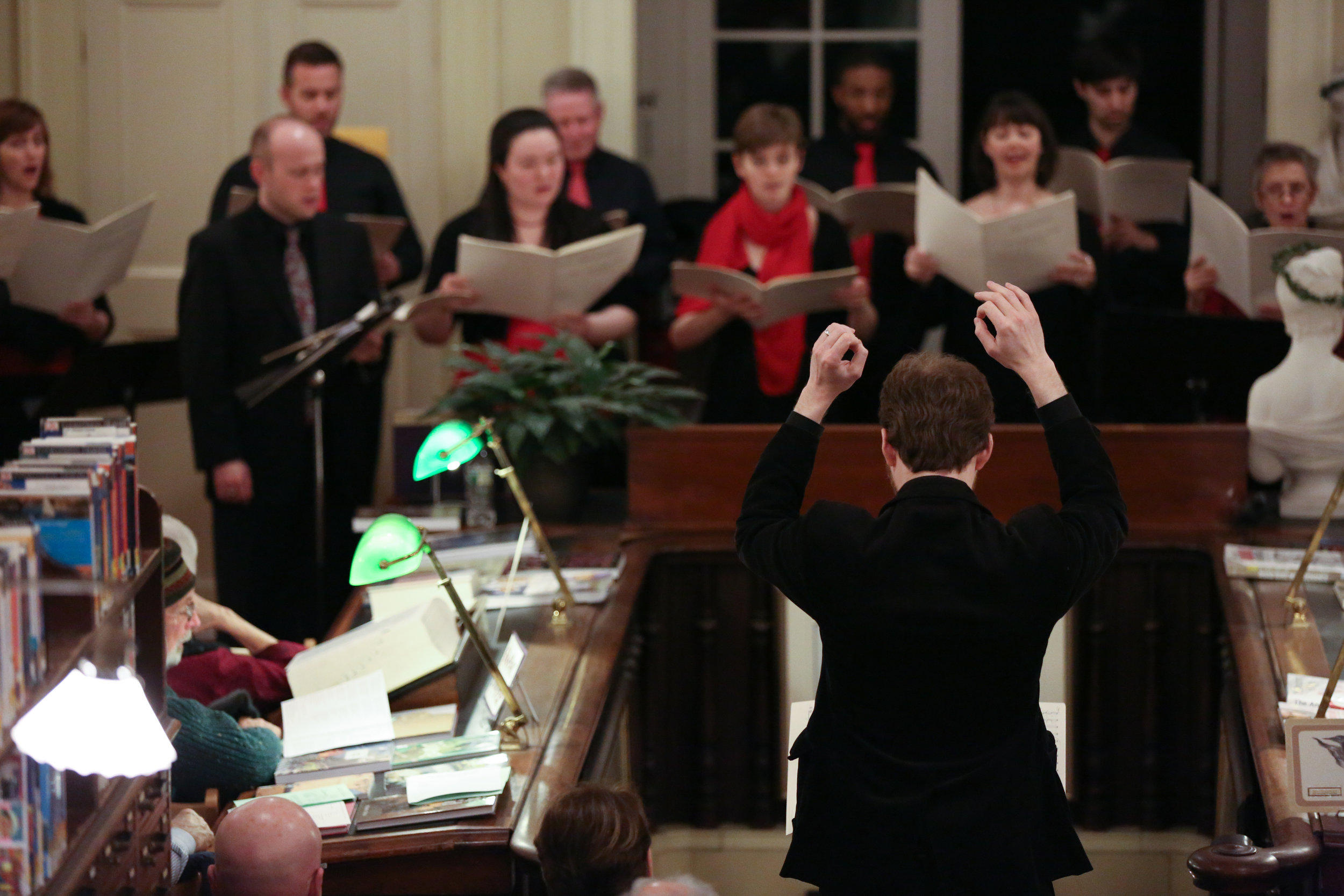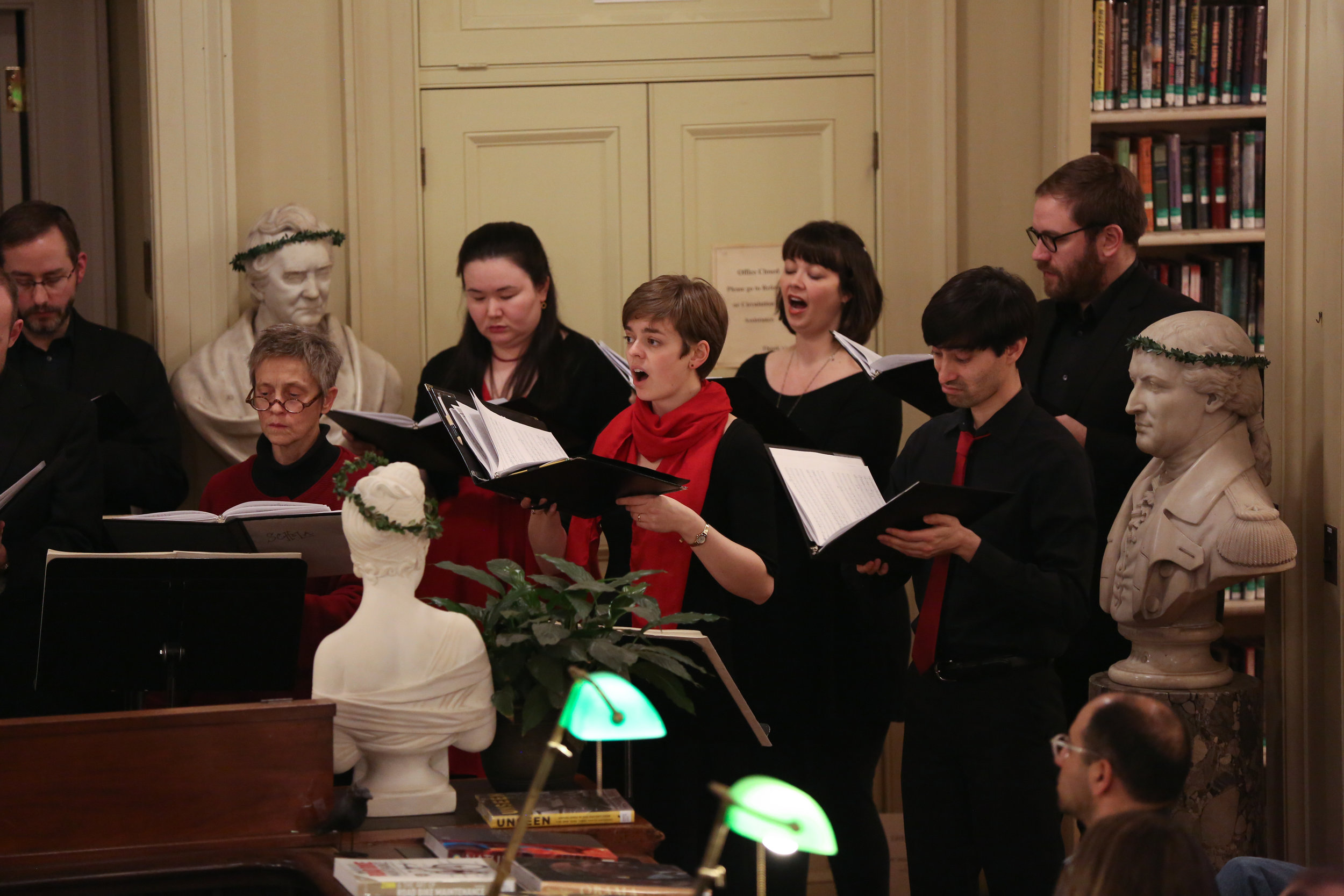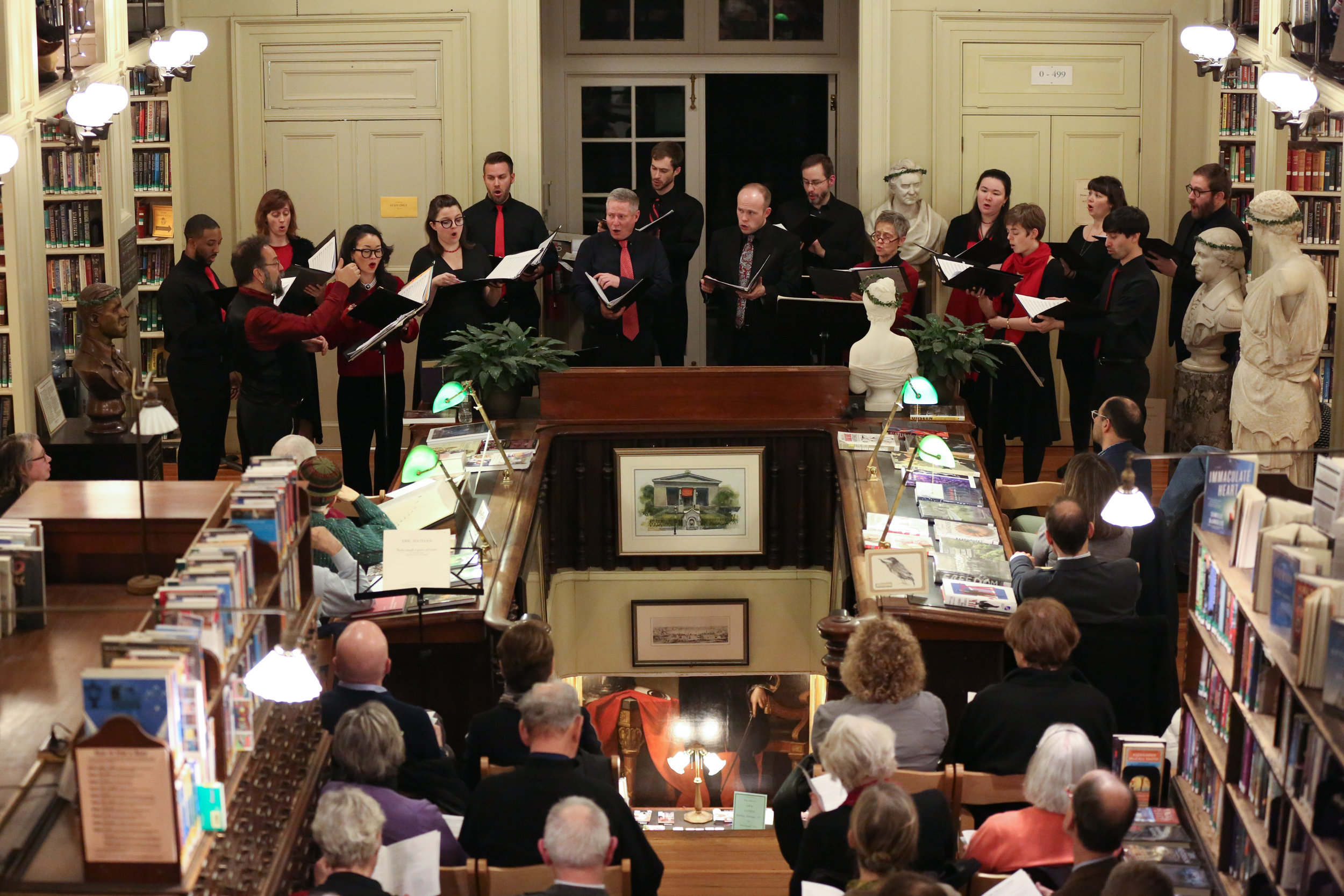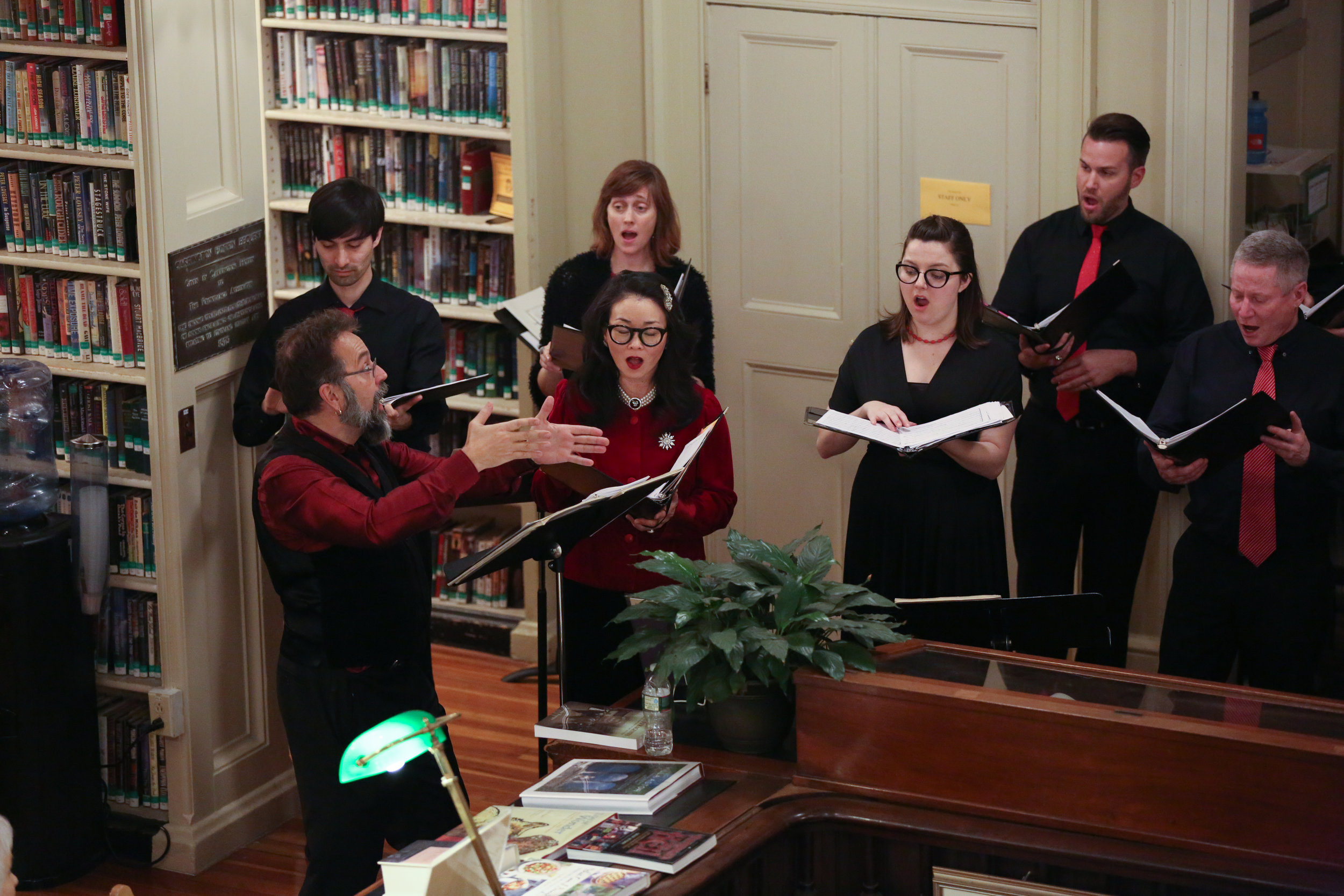how small a part of time (2016)
for Sixteen Voices or Full Choir (SATB)
Commissioned by The New York Virtuoso Singers
Listen (Full Recording)
Performed live by The New York Virtuoso Singers | Harold Rosenbaum, conductor
(Please note that that police siren at the end of this live recording is unintentional)
Duration: 6 minutes
Watch (Video):
Performed live by The New York Virtuoso Singers | Harold Rosenbaum, conductor
(Please note that that police siren at the end of this live recording is unintentional)
View Online Score
Program Note
The text for my choral work, “how small a part of time,” is an original poem that I created entirely from the titles I found in a single drawer in the card catalogue of the Providence Athenaeum, which all begin with the word, “how.” As I read through these titles, each of which is either handwritten or typewritten, I was struck by the beauty created by their random juxtaposition as well as their unique visual identity. Taken purely as grammatical fragments and disassociated from the books that they refer to, each title either poses a question or gives the answer to a question left unasked. These questions and answers initially seem to point our thoughts in distinct but disparate directions, but as a totality they ask and speak of deeper things – of the passage of time and of life itself. I think of this poem as a found object, one that was laying in the catalogue awaiting discovery. “how small a part of time” was commissioned by The New York Virtuoso Singers.
– Eric Nathan (January, 2017)
Text
“how small a part of time” by Eric Nathan (2016)
How a baby grows
How a bride was won
How a merchande dyd hys wife betray
How a people die
How about Europe?
How America lives
How buildings work
How can Africa survive?
How children fail
How children learn
How cities are saved
How dear to my heart
How can you defend those people?
How computers work
How did I get to be 40 and other atrocities
How does your garden grow
How England saved Europe
How fascism ruled women
How far she went
How far the promised land?
How firm a foundation
How France built her cathedrals
How great generals win
How he lied to her husband
How he saved her
How I became a writer
How I came to know fish
How I crossed Africa
How I came west
How I found America
How I grew
How I killed a bear
How I made a hundred movies
in Hollywood and never lost a dime
How I saved the world
How I wrote the story
How it is
How it is done
How it was
How life begins
How late it was, how late
How many years
How much is left of the old doctrines?
How much is that in dollars?
How nature cures
How odd of God
How old is this house?
How our laws are made
How plants get their names
How Shakespeare spent the day
How she died
How she loves him
How small a part of time
Press
"The second half of the concert began with how small a part of time, a piece whose lyrics and music were written by Eric Nathan. The text is a found-poem, an assemblage of phrases beginning How, taken from the titles of books found in a single card catalog drawer at the Providence Atheneum. The musical and conceptual theme of the work revolves around mystery – how? – and the lush sound of the work is a series of experiments in repetitions, cascades and echoes.
"Within each of the four chorus sections, individual voices materialized fleetingly, only to become part of the section once again, like thoughts unfinished. The repeated how’s evolved gradually into an organic wholeness of sensibility; very high registers and long extended notes made questions ethereal. The quiet end of the piece seemed to offer open-endedness as an answer to the how questions even when book titles might offer stories or solutions. The final two lines, quietly offering reflections on love and time, extended mere question-asking into a realm of pensive meaning-quest."
Jean Ballard Terepka (TheaterScene.Net)
May 29, 2017
Read review
Performance at the Providence Athenaeum
Schola Cantorum of Boston
Fred Jodry, Director
February 16, 2018
This program was sponsored by Chas A. Miller III & Birch Coffey/Lois H. and Charles A. MillerFoundation and is made possible by a grant from the Brown Arts Initiative
Photo credit: Jacob Cader
